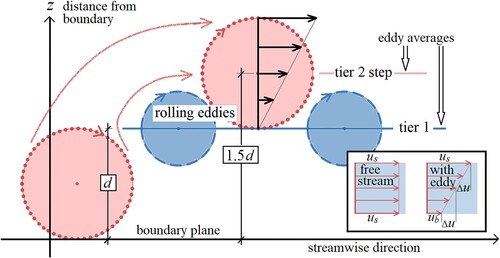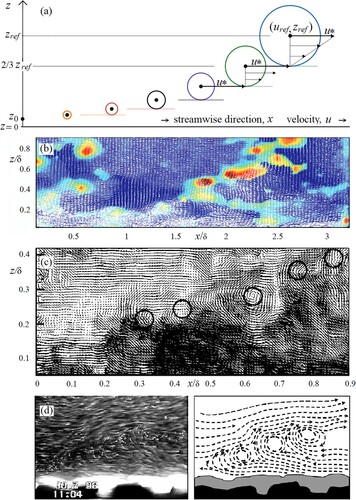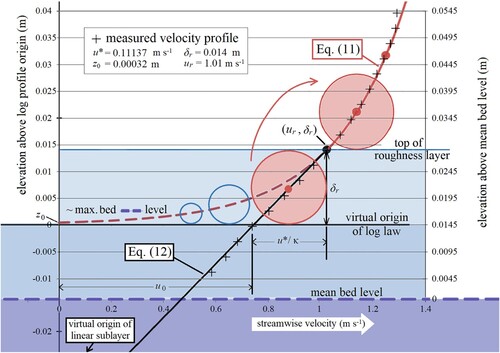Figures & data
Figure 1 A conceptual model of spanwise-axis rolling eddies. Eddies are visualized in the frame of reference of local mean downstream velocity and drawn circular. Eddy tier 1 (blue) is an arbitrary distance d from the boundary. The dotted red boundary eddy at left is rolled out onto tier 1 when its diameter reaches d. The dotted eddy then rolls on tier 1 with its centroid 1.5d from the boundary creating tier 2. The insert illustrates streamwise velocities within fluid elements, size d, without and with a rolling eddy. Flow direction is from left to right

Figure 2 (a) Model results showing Eq. (3) or Eq. (7) with six stacked tiers of spanwise axis eddies rolling at u* relative to roll planes at 2/3rds of their diameter. Images b & c show vortices visualized in a rectangular tunnel (depth 2δ), by Camussi and Di Felice (Citation2006) for momentum thickness Reynolds numbers of 1015 and 17,500 respectively. In b large local intermittency is shown in red and small intermittency is shown in dark blue. In image c “circles evidence the heads of presumed hairpin vortices” in the instantaneous velocity field. Visualization d shows large-scale coherent vortices detected by Cuthbertson and Ervine (Citation2007) “these eddies commonly occurred in pairs or groups each with the same rotational sense, and typically occupied a region of 0.1–0.4 flow depth”. Mean flow directions are from left to right

Figure 3 Streamwise velocity profile on a rough boundary showing model predictions and data measured by Smart et al. (Citation2010) superposed on a diagram showing non-viable blue eddies suppressed within the roughness layer and an eddy of size δr rolling out of the roughness layer. Different options for velocity profile datum are indicated

Table 1 Log law parameters for three velocity profiles of fully developed turbulent channel flow calculated by DNS
